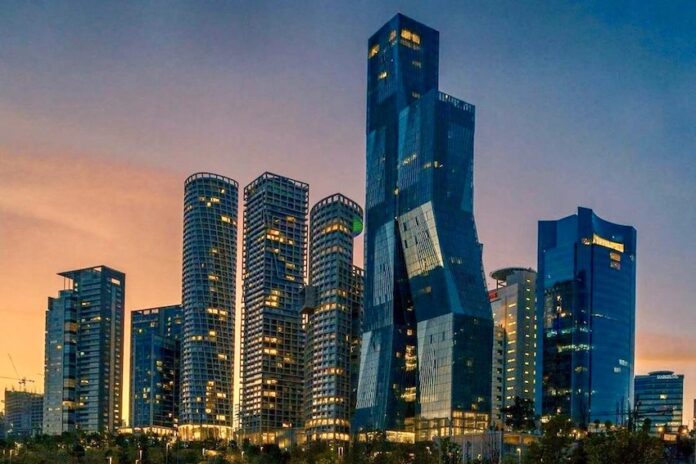Standing on the western edge of Mexico City, Santa Fe presents a startling vision of modernity. Glass-and-steel skyscrapers rise dramatically against the backdrop of the Sierra del Monte de las Cruces, reflecting the afternoon light off their mirrored surfaces. Logos of the world’s biggest brands — names like IBM, Microsoft and Santander — sit atop these towers, making their mark in the neighborhood now known as Mexico’s premier business district. At its heart lies Parque La Mexicana, an expansive green space with jogging paths, man-made lakes, and manicured gardens, designed to offset the concrete sprawl and provide much-needed green space for residents and visitors alike.
Mirrored towers: Santa Fe’s modern society
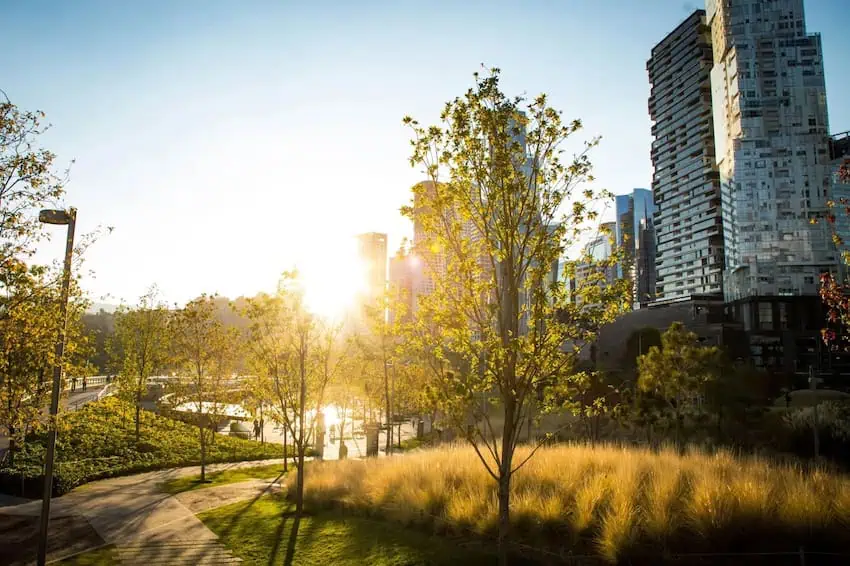
Santa Fe is home to thousands of residents, predominantly upper-middle-class professionals and expatriates. During weekdays, the population swells significantly as tens of thousands of commuters arrive for work. The area has also become an educational hub, attracting students to six major universities located here: Universidad Iberoamericana, Tecnológico de Monterrey, CIDE, Universidad Panamericana, UAM, and UVM.
Centro Santa Fe, a major shopping destination, anchors the district’s retail offerings. This sprawling commercial hub stands as a testament to Santa Fe’s outsized economic importance to Mexico City. Recent developments, such as the Distrito Santa Fe project, aim to create a more integrated living community. This ambitious plan envisions adding diverse residential options, further enhancing Santa Fe’s appeal.
Beyond this modern façade, deep ravines and informal settlements border the edges of this futuristic capsule of Mexico City. Public transportation remains notably scarce, forcing inhabitants and commuters to rely heavily on cars to navigate the area. This dependency contributes to two significant issues affecting Mexico City’s quality of life: increased traffic congestion and worsening air pollution.
From waste to wealth: Santa Fe’s transformation
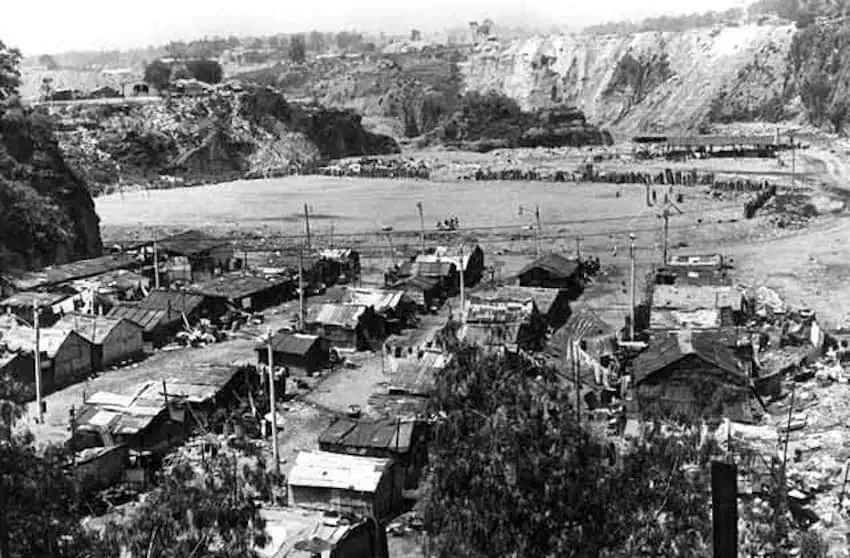
In the 1980s, the Mexican government had a vision — to transform what seemed like undeveloped space in Santa Fe into a neoliberal utopia. However, the area’s history was far from empty. The steep gulches and unstable volcanic soil had, until then, made it unsuitable for traditional urban development. In fact, by the 1950s, it served as a dumping ground for 3,000 tons of daily waste. The dump operated under Luis Tellez, the government-appointed “dump boss,” with streets named after recyclable materials— “Cardboard,” “Glass,” and “Aluminium” — reflecting the sorting activities that took place there.
Engineers compacted trash and layered sand on top in an attempt to stabilize the ground, enabling building construction. The real boom began in the 1990s with the opening of the Santa Fe Mall. That was quickly followed by an expansion of commercial and residential projects. Upper-middle-class families, corporate expats, and university students started flocking to Mexico City’s trendiest neighborhood, resulting in the mix of residents we see today.
Forgotten communities: The displacement of pepenadores
The transformation of Santa Fe required the displacement of the pepenadores, or waste pickers. Their livelihoods depended on the dump, where they earned income by separating recyclable materials and selling them to local businesses. The relocation process, which started in 1987 and took over 15 years to complete, showcased the human cost of such urban development.
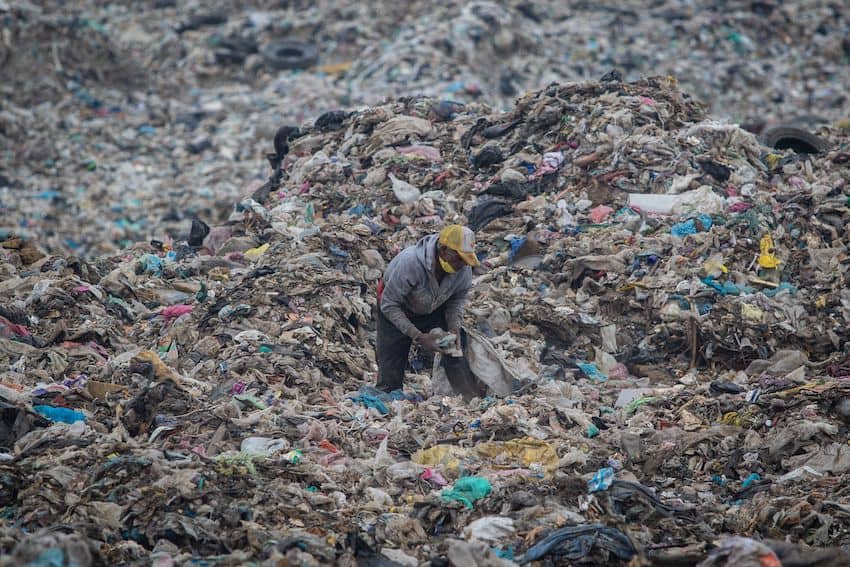
In Carina Frykman’s essay “The Power of Waste,” we learn that government officials relocated 800 pepenador families to peripheral zones like Tlatel Xochitenco. Aside from the financial setbacks that came with it, the families faced significant challenges, including the dismantling of their tight-knit community and ongoing health issues. Studies highlighted the severe health risks faced by dumpsite scavengers, including respiratory issues, digestive problems, skin rashes, infections, and sexually transmitted diseases.
Cracks in the façade: Santa Fe’s infrastructure challenges
Santa Fe’s rapid development resulted in inadequate infrastructure planning, and today’s inhabitants face a crosshatch of ongoing challenges.
Traffic congestion: The enclave’s car-centric design provides limited access to Mexico City’s subway, trains, or rapid transit bus systems, making transportation a serious issue. At one point, commuters were spending an average of 26 days a year traveling to and from work in Santa Fe. More recently, the government introduced CableBus Line 3 — an aerial cable car system — to alleviate congestion, though with mixed results.
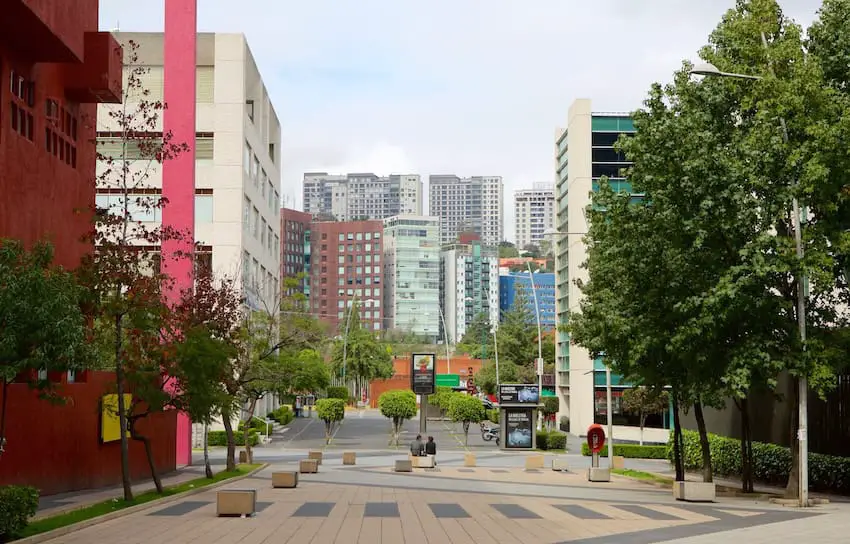
Health hazards: As one might expect of a garbage dump that wasn’t properly excavated, the decaying trash beneath emits methane, contributing to dangerous PM2.5 levels that frequently exceed World Health Organization safety limits. This is in addition to a dangerously high level of greenhouse gas emissions from the abundance of vehicles.
Water management: Despite Mexico City’s severe water crisis, development proceeded with minimal planning for basic utilities. More than 1,200 luxury homes discharge sewage directly into ravines or groundwater systems due to the absence of a proper sewer network. Many buildings depend entirely on daily water deliveries by tanker trucks because they lack connections to the public water system.
Lessons from Santa Fe’s experiment
Santa Fe’s transformation represents one of Latin America’s most ambitious urban renewal projects — a megaproject that dramatically reshaped Mexico City’s western edge. It also reminds us that anything impressive must start with a solid foundation.
Today, Santa Fe stands as both an achievement and a warning. On the bright side, major international corporations provide employment for thousands. On the dark side, environmental challenges and unstable living conditions, both in and outside of the immaculate haven, remain a struggle. While Mexico City is making recent progress in terms of waste management, Santa Fe, the city built on waste, shows that urban development must address environmental realities, not conceal them. Even the most impressive architectural achievements may ultimately rest on shaky foundations – both literally and metaphorically.
Bethany Platanella is a travel planner and lifestyle writer based in Mexico City. She lives for the dopamine hit that comes directly after booking a plane ticket, exploring local markets, practicing yoga and munching on fresh tortillas. Sign up to receive her Sunday Love Letters to your inbox, peruse her blog, or follow her on Instagram.
